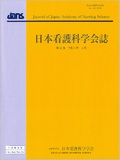Japanese
English
- 販売していません
- Abstract 文献概要
- 参考文献 Reference
要旨
目的:尺度開発の第一段階として,Siu et al.(2005)が開発したCLEQ(The Conditions for Learning Effectiveness Questionnaire)尺度を参照に,臨地実習における看護学生のエンパワーメントの構成概念を明らかにする.
方法:4年次の看護系大学生6名に半構造化面接を実施し,内容分析によりカテゴリ化した.
結果:CLEQ尺度の構成概念との比較により,下位尺度である【支援】,【機会】,【資源】,【情報】に加え,新たに【安心できる環境】,【患者との関わり】が重要な要素として明らかとなった.
結論:臨地実習で日本の看護学生がエンパワーメントを発揮するためには,【安心できる環境】や【患者との関わり】が特徴であり,今後の尺度開発ではこれらの側面を看護学生のエンパワーメントの構成概念に含むことが必要であると示唆された.
Purpose: To clarify the construct of empowerment of nursing students in clinical practice with reference to the CLEQ (The Conditions for Learning Effectiveness Questionnaire) scale developed by Siu et al. (2005), as the first step of scale development.
Method: Semi-structured interviews were conducted with six 4th-year nursing students then categorized by content analysis.
Results: Through comparison with the CLEQ scale construct, it was confirmed that, in addition to the “support,” “opportunity,” “resources” and “information” subscales, “an environment that gives peace of mind” and “relationship with patients” were newly clarified as an important element.
Conclusion: “An environment that gives peace of mind” and “relationship with patients” are characteristics in order to demonstrate the empowerment of Japanese nursing students in clinical practice, and it was suggested that these aspects should be included in the construct of empowerment of nursing students in future scale development.
Copyright © 2021, Japan Academy of Nursing Science. All rights reserved.


